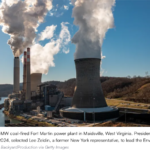Residents and marine scientists alike are mystified by something strange washing up on the shores of Newfoundland, Canada. Over the past few months, white dots have been found up and down the beaches of the province on Canada’s east coast.
According to reports, it is sticky on the outside, but firm and slightly spongy on the inside. It is also flammable. About 40,000 people belong to a Facebook group called Beachgoers in Newfoundland and Labradorand their publications attracted the attention of a wider audience.
The Facebook group is a place for like-minded people to share things they find and leave tips for fellow beachgoers. While most of the images on the page feature tiny pieces of sea glass and the occasional piece of art made from it, the sticky white blobs are making the rounds online.
“It looked like a pancake before you flipped it, when it had these little bubbles with the dimples,” Newfoundland resident David McGrath said. The Guardian. “I’ve poked a couple with a stick and they were squishy and firm inside. I’ve lived here 67 years, and I’ve never seen anything like this. Ever.”
McGrath went on to say that there are hundreds of pips across the beaches near his home. He continued: “They sent the Coast Guard and I asked them how bad the situation was.” “They told me they had 28 miles of coastline full of this stuff and they had no idea what it was. Is it toxic? Is it safe for people to touch it?”
As of this writing, Environment and Climate Change Canada has no answers.
“To date, ECCC has conducted numerous aerial, underwater and manual surveys of beaches and beaches in the area to determine the extent of the material, what it is and its likely source,” said Samantha Bayard, a spokesperson for Environment and Climate Change Canada. He said CBS News“So far, neither the material nor its source has been identified.”
The comments section of the Facebook post is full of suggestions, ranging from “whale mucus” to ambergris, a highly sought-after waxy substance obtained from the guts of sperm whales that is sometimes used in perfumery. But so far, none of these suggestions have proven true.
CBS News Researchers know the blobs are not a petroleum hydrocarbon, a petroleum lubricant, or a biofuel, but finding an answer could take months, the researchers reported. When the truth finally comes out, hopefully Canada’s mysterious slime balls won’t be like the feces and meth-filled ones found in Australia.
this post Mysterious white dots are washing up on Canadian beaches appeared first on Inertia.



